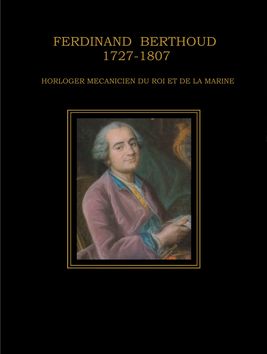Ferdinand Berthoud 1727 - 1807. Horloger mécanicien du Roi et de la Marine
Description
On December 13, 1760, Ferdinand Berthoud deposited at the Royal Academy of Sciences a "Memoir on the principles of construction of a Navy Clock", the famous Marine Clock No. 1, whose construction will be completed in early 1761.
He made marine clocks to calculate longitude at sea and deserved to be chosen for watchmaker-marine mechanic. In 1764, on the orders of the King, the Academy commissioned two of its members, Duhamel du Monceau and the Abbe Chappe of Austria, to prove Ferdinand Berthoud's No.3 marine watch at sea. They embarked, with Ferdinand Berthoud, in Brest on October 7 on the corvette "L'Hirondelle" 2. The report of the mission, read by Abbe Chappe d'Auteroche at the Academy on November 14, will never be published, which is exceptional. In his Treatise on Marine Clocks, Berthoud insinuates that this oversight is the work of Duhamel du Monceau, whose nephew, Fougeroux de Grandlieu, then ensign on this cruise, died a few days after his return2.
Ferdinand Berthoud was appointed watchmaker of the king from 1770. He was appointed from its creation member of the Institute (1795). Berthoud became a member of the Royal Society on February 16, 1764.
He is considered one of the inventors of the marine chronometer which allows the determination of the longitude at sea necessary for navigation.

